Ferrocement & PumiceCrete

We’re going to use ferrocement for the roof. The original plan, (for the past 18 months) was to try Latex Cement. This was pioneered by George Nez, it’s modified reinforced concrete, and its only 1cm thick. In their examples the they use a hyper parabolic shape which takes much of the force to the beams, but its still extremely strong. They use 2 layers of fibreglass mesh (flyscreen gridded mesh not fibreglass matt) for reinforcement and 1cm of latex modified cement. When the book was published it was recommended to use a styrene-butadine additive, the same stuff they make car tyres with (and chewing gum). But recent studies by William Seth Carleton (2013) show that a powder based Acrylic additive is superior in terms of strength, UV resistance and toxicity, whilst being far easier to work with. Well, we could only find the styrene-butadine additive in Ecuador, and it was going to cost around $2000. So we started looking for alternatives. We tested a few types of latex whilst researching the options, the arch in the photo is made using two layers of fibreglass mesh, PVA modified cement and sawdust as an aggregate. PVA isnt recommended as its water soluble even after drying, and the saw dust probably isnt a good idea either. That said it was strong! It held my weight even when I wasn’t standing on the top of the arch. It held two of us for about 5 seconds before breaking.
Ferrocement is a technique first developed for boat building, a strong rebar form is covered with multiple layers of chickenwire and around 3cm of cement. Its very strong. Our form will be permanent, cladding of split bamboo, which is incredibly strong in tensile strength. For this reason we decided not to use thick rebar in the recipe.
Our structure consists of:
- Bamboo beams
- Split bamboo cladding
- Reused polypropylene bags to stop the mix falling through the gaps in the bamboo)
- Nylon shade cloth – reinforcement in the bottom mm of cement, prevents hairline cracks (see meshcrete)
- Chicken wire
- 2-3cm cement – 3:1 sand:cement
- 0.5 cememt polish coat – 2:1 fine sand:cement
For any of the more structural elements, like the shallow arches on the hall roof, we will also add a layer of PumiceCrete. This is a technique we learnt from Steve Kornher’s website, its more or less the same recipe as above but with an additional layer of driveway mesh (10cmx10cm spaced welded rebar mesh) and 10cm of pumicecrete. The pumicecrete is simply pumice (presoaked in water) and portland cement to a ratio of 8:1. No sand necessary. A final polish coat is then applied to waterproof. When pouring fresh concrete on top of old, he recommends wetting the old and painting on a cement milk to glue the two layers together. This is just cement and water to a creamy consistency.
- Luke & Feli’s Photo
© 2025 Another Bag in the Wall | Theme by Eleven Themes

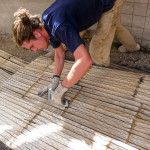
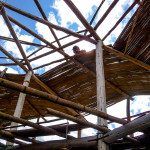
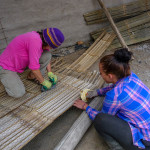
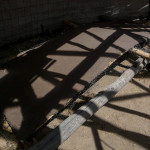
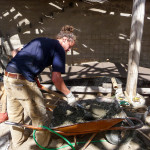




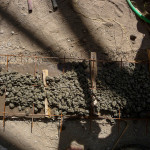
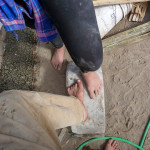
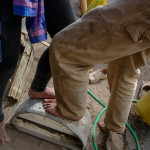


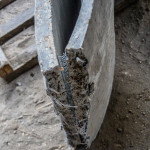
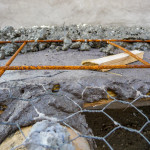
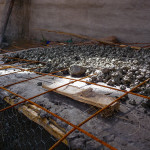




Leave a Comment